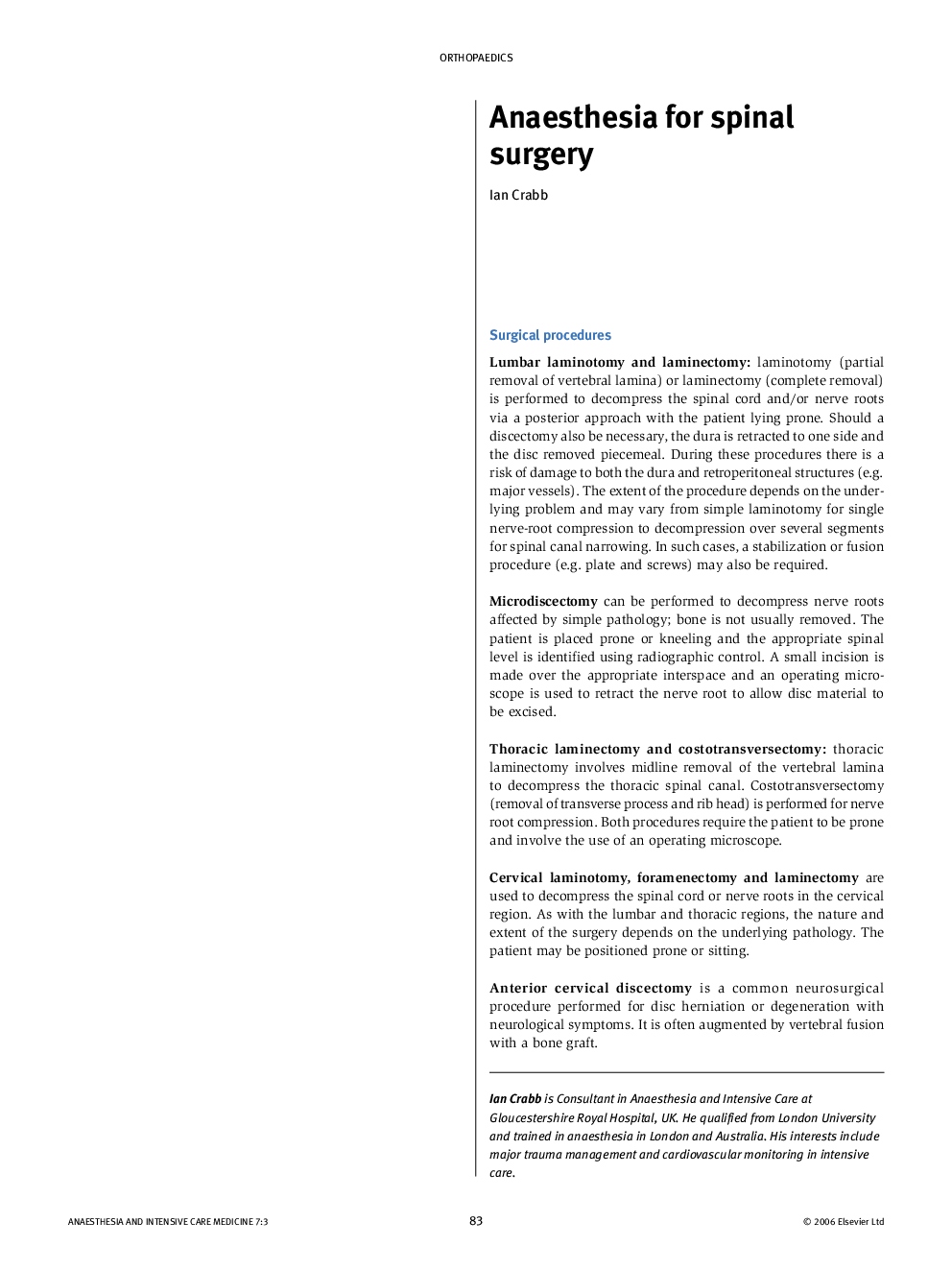| Article ID | Journal | Published Year | Pages | File Type |
|---|---|---|---|---|
| 2743947 | Anaesthesia & Intensive Care Medicine | 2006 | 4 Pages |
Thoracolumbar procedures (excluding corrective surgery), cervical procedures and spinal reconstruction and fusion require pre-, intra- and postoperative care. Thoracolumbar procedures are common and generally patients are healthy and no special preoperative investigations are necessary. Simple lumbar procedures may be carried out under local or regional anaesthesia, but this is seldom done in practice because of medico-legal concerns. A general anaesthetic technique is more usual, and for all posterior spinal procedures the patient is placed in the prone or knee-elbow position. Good postoperative analgesia is important. Careful airway assessment is vital in all patients requiring cervical spine surgery. General anaesthesia with tracheal intubation and ventilation is required. Again, for posterior approaches the patient is prone; however, the seated position is favoured by some surgeons. Extubation may be difficult and is best performed with the patient awake. Postoperatively, airway obstruction may be life-threatening. Spinal reconstruction is indicated for correction of kyphoscoliotic deformities and for stabilization following trauma or infection. Careful preoperative assessment is required and should include a lung-function test. Intubation with a double lumen may be necessary and standard maintenance techniques are applicable. Early extubation is desirable and good postoperative pain relief is essential. Spinal cord damage during surgery, caused by spinal cord perfusion pressure or underlying pathology, for example, can be monitored with the ‘wake up’ test or the more sophisticated method of somatosensory evoked potentials.
